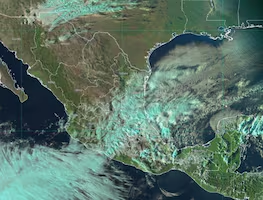Más Información

Frente frío 21 y tormenta invernal golpean México; alertan por caída de nieve, aguanieve y temperaturas bajo cero

Martí Batres se reúne con Ariadna Montiel y Alejandro Svarch; discuten estrategia de "La Clínica es Nuestra"

Ken Salazar se va de México entre "choques" con AMLO y Sheinbaum; aquí un recuento de los polémicos encuentros

Ministro Alcántara Carrancá advierte sobre la "fácil destrucción" del legado constitucional; “sorprende que no hubiera ocurrido antes"
A 7.6-magnitude earthquake hit Honduras on January 9, according to the U.S. Geological Survey (USGS).
The epicenter was located 44km East of Great Swan Island, Honduras, at a depth of 10km.

(Map of the epicenter of the Honduras earthquake – Image
taken
from the USGS website)
Given the location and magnitude of the earthquake, a tsunami warning center issued an alert for the Caribbean coast, all the way from Mexico to Panama, and for all the nearby islands, but do all quakes cause tsunamis?
According to Mexico's Seismic Service, earthquakes in the seabed cause a violent movement of water volume that can, in turn, generate waves of several meters high, it all depends on the magnitude of the quake.
Therefore, Mexico is indeed at risk of being hit by tsunamis . In the last 283 years, over 60 tsunamis were registered in the coasts of the West Pacific. The most notable case happened in 1932 , when a 6.9 quake hit the coasts of Jalisco and Colima and caused a 10-meter wave which traveled 1 kilometer inland, killing 75 people and injuring 100.
The coasts of the Mexican Pacific – a total of 1,744 km – are a high-risk area, and millions of people live in the shorelines of Chiapas and Jalisco.
It's within this area that we can find the Guerrero Gap , an area that hasn't seen tectonic movements in 105 years. With each passing year, the probability of this or adjacent areas to move is high, and this could cause a powerful earthquake, probably of a higher magnitude than the one on September 19, 1985.
Is something being done to prevent a tsunami?
As part of the Science and Technology Research Partnership for Sustainable Development project (SATREPS), Mexican universities and organizations (like the UNAM and CONACYT) are working together with several Japanese Universities and Agencies to evaluate the risk associated with powerful earthquakes and large tsunamis in the Mexican Pacific and decrease the impact of these disasters.
To achieve this, the Project is focusing on the observation and analysis of the seabed to determine the movement of plate tectonics , on the simulation of seismic events and tsunami propagation, and on assessing, with this information, the vulnerability and risk of coastal areas to prepare an education program.
In Mexico, large tsunamis happen every 200 to 500 years but, unfortunately, the long time lapse hasn't allowed us to keep a detailed track of the chain of catastrophic events in our country.
am






